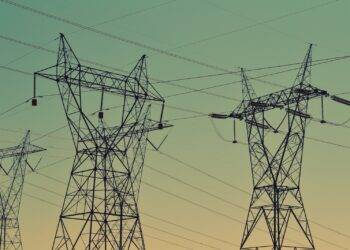Southern Poland is grappling with record-breaking rainfall that has already surpassed levels witnessed during the catastrophic “flood of the century” in 1997. The heavy downpours, driven by a weather system known as the Genoa depression Boris, have caused extreme flooding risks in regions such as Lower Silesia, Opole, and parts of Silesia. In some areas, more rain has fallen in a single day than during the peak of the 1997 disaster, prompting widespread concern and warnings from meteorological authorities.
The most severe rainfall was recorded in the village of Jarnołtówek in the Opole Voivodeship, where 156.3 mm of rain fell within 24 hours. This shattered the previous record of 131.4 mm, set in July 1997 during one of the most devastating floods in modern Polish history. Other areas have seen similarly extreme weather, with Świeradów-Zdrój in Lower Silesia registering 120 mm of rain, compared to the town’s previous record of 56 mm.
Gdy strumyk płynie z szybka, stokrotka nie rosła polna.
— Nikt Ważny (@am3iwalentny) September 14, 2024
📍Wodospad Szklarki (14.09.24)
Autor: @ Damian Paszkiewicz Photography #Powodź #deszcz #wielkawoda2 #żywioł pic.twitter.com/eeEUBxxpoh
The deluge has been attributed to Boris, a low-pressure system originating from the Mediterranean that has swept across southern Poland, bringing with it vast quantities of moisture. Genoa lows like Boris are known for their ability to generate intense rainfall over short periods, and this event has proven to be one of the most extreme on record.
Widespread Impact and Flood Warnings
The sudden and intense nature of the rainfall has overwhelmed local drainage systems and rivers, creating immediate flooding risks. The Polish Institute of Meteorology and Water Management (IMGW) has issued a series of flood warnings across southern and central Poland. These warnings range from the lowest (first degree) to the highest (third degree), reflecting the scale of the potential threat in various areas.
In addition to Jarnołtówek and Świeradów-Zdrój, other towns and cities have also seen rainfall levels far above normal. Prudnik, in the Opole Voivodeship, recorded 121.4 mm of rain, while Pszczyna and Pilchowice in the Silesian Voivodeship experienced 105.1 mm and 110.1 mm of rain, respectively. These figures represent some of the highest daily totals ever measured in these locations.
Meteorologists have warned that this may be just the beginning. Weather forecasts predict even more rainfall in the coming days, with an additional 100-200 mm of rain expected to fall in southern Poland by the weekend. The heaviest rains are likely to hit the southwest, including parts of Lower Silesia, Opole, and Silesia, where the ground is already saturated from the recent deluge.
Comparison to the 1997 Flood
For many residents of southern Poland, the current situation brings back haunting memories of the 1997 flood, which remains one of the most devastating natural disasters in the country’s history. During that event, torrential rains caused rivers, particularly the Oder, to overflow, resulting in widespread destruction. Entire communities were submerged, and the floodwaters took weeks to recede. The 1997 flood caused billions of zlotys in damages and claimed dozens of lives.
While the exact scale of the current flood threat remains uncertain, the fact that rainfall levels have already exceeded those of 1997 in some areas has heightened concerns. Authorities are preparing for the possibility that rivers like the Oder and the Vistula could soon surpass their banks, potentially leading to severe flooding in urban and rural areas alike.
Preparedness and Response
In response to the growing threat, local governments and emergency services have been mobilizing flood defenses, including sandbags and temporary barriers. Residents in flood-prone areas have been advised to remain vigilant and prepare for potential evacuations. Several schools in the hardest-hit areas have been closed, and roads have been rendered impassable due to rising water levels.
The Vistula River, Poland’s largest and most important waterway, is one of the primary concerns for flood experts. As water levels rise, officials are closely monitoring the river, particularly near the southern city of Kraków and farther downstream in Warsaw. Should the Vistula breach its banks, it could lead to widespread flooding in the country’s most densely populated regions.
In a statement issued earlier today, Poland’s Prime Minister called for unity and caution during the ongoing weather crisis. “We are facing a challenging situation, but we must remain calm and work together to protect our communities,” he said. “Our emergency services are doing everything possible to mitigate the risk of flooding, but we ask residents in high-risk areas to be prepared and follow safety instructions.”
A Shift in Weather Patterns?
The extreme weather event has also sparked debate among meteorologists and climate experts about whether Poland’s weather patterns are becoming more unpredictable. While Genoa lows like Boris have impacted Poland in the past, their frequency and intensity appear to be increasing.
According to Paweł Albertusiak, a weather analyst, “We are seeing more and more instances of extreme weather in Poland, from heatwaves to flooding. The current rainfall levels are unprecedented, and it’s difficult to predict how much worse it will get.” He added that changes in the global climate could be contributing to the increasing severity of weather events in Central and Eastern Europe.
In recent years, Poland has experienced both severe droughts and extreme rainfall, raising concerns about the country’s long-term water management strategies. With rivers like the Oder and Vistula playing a vital role in Poland’s economy and infrastructure, the government has been urged to invest more in flood prevention and water management systems.
The Road Ahead
As southern Poland braces for more rainfall, the full extent of the damage remains to be seen. What is clear, however, is that the region faces one of its most serious flood threats in decades. With forecasts indicating that the heaviest rains are yet to come, the country’s flood defenses and emergency response systems will be put to the test.
For now, residents in the affected areas can only wait and hope that the worst can be avoided. But with more rain on the way, the situation remains precarious, and the lessons learned from the 1997 disaster are being put to use once again in Poland’s ongoing battle with the forces of nature.


















